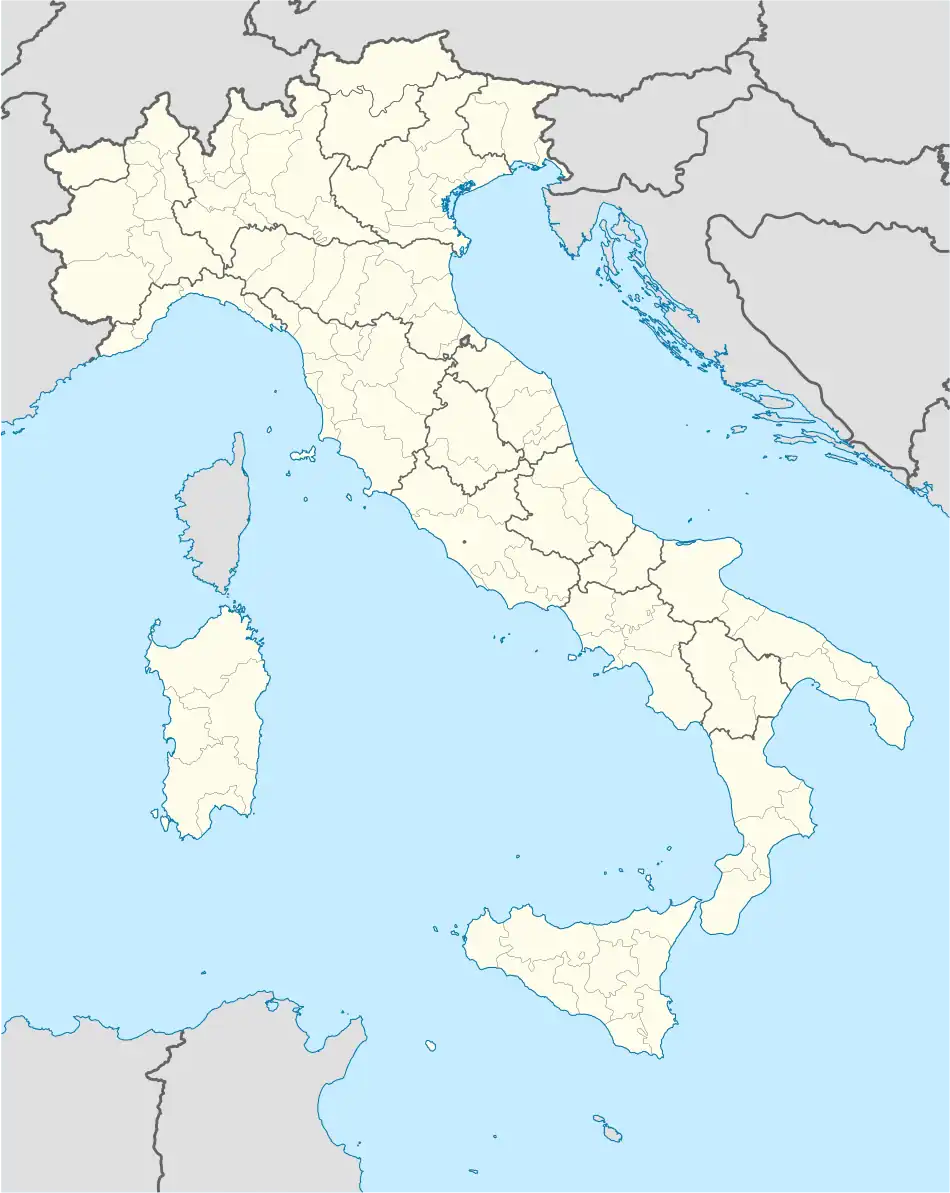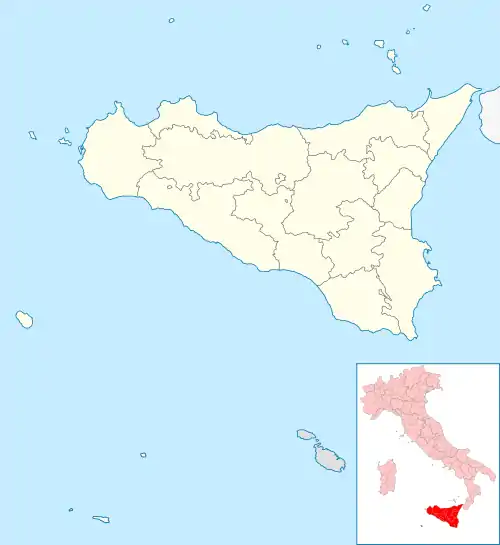Petralia Sottana | |
|---|---|
| Comune di Petralia Sottana | |
 | |
Location of Petralia Sottana | |
 Petralia Sottana Location of Petralia Sottana in Italy  Petralia Sottana Petralia Sottana (Sicily) | |
| Coordinates: 37°48′N 14°5′E / 37.800°N 14.083°E | |
| Country | Italy |
| Region | Sicily |
| Metropolitan city | Palermo (PA) |
| Frazioni | Piano Battaglia, Landro, Tudia, Recattivo |
| Government | |
| • Mayor | Leonardo Iuri Neglia |
| Area | |
| • Total | 178.35 km2 (68.86 sq mi) |
| Elevation | 1,039 m (3,409 ft) |
| Population (30 November 2016)[2] | |
| • Total | 2,770 |
| • Density | 16/km2 (40/sq mi) |
| Demonym | Petralesi |
| Time zone | UTC+1 (CET) |
| • Summer (DST) | UTC+2 (CEST) |
| Postal code | 90027 |
| Dialing code | 0921 |
| Patron saint | St. Calogerus |
| Saint day | June 18 |
| Website | Official website |
Petralia Sottana (Sicilian: Pitralìa Suttana) is a town and comune in the Metropolitan City of Palermo, in the island of Sicily, Southern Italy. The main characters in Emanuele Crialese's 2006 film of Sicilian immigration to America, Nuovomondo, come from the town of Petralia.
Geography
The Madonie Mountains cover the commune. Petralia Sottana hosts the headquarters of the Madonie Regional Natural Park, in which is included a significant amount of its municipal territory.[3]
The commune is on the border between the Metropolitan City of Palermo and the Province of Caltanissetta . It is bounded by the communes of Alimena, Blufi, Caltanissetta, Castelbuono, Castellana Sicula, Geraci Siculo, Isnello, Marianopoli, Petralia Soprana, Polizzi Generosa, Resuttano, Santa Caterina Villarmosa, Villalba.
Coat of arms
The coat of arms shows three lilies, referring to Lilium Petrae (Stone lily), a possible etymology of the town name.
Main sights
- Maria Santissima Assunta (Chiesa Madre or Mother Church), known from the 9th century. Of the original building, only a portal in Gothic-Catalan style has survived. The current structure, with a nave and two aisles on the basilica plan, was built in 1633–1680. The sacristy houses a rare bronze lampstand dating back to the Arab conquest of Sicily, with an inscription in Kufic characters[4]
- San Francesco d'Assisi: 17th century church
- Santissima Trinità: (1531) church formerly attached to abbey
- Palazzo del Giglio: current town hall
- Santa Maria alla Fontana
- Museo Civico Antonio Collisani: Civic museum with archeological and geological-paleontological collections
- Grotta del Vecchiuzzo, a prehistoric cave where archeological finds dating back to the Late Neolithic were discovered[5]
- Sanctuary of the Madonna dell'Alto
People
- Luciano Chiara, mathematician
- Giuseppe Colosi, zoologist
- Antonio Pucci, racing driver
- Cesare Terranova, judge and politician killed by the Mafia
References
- ↑ "Superficie di Comuni Province e Regioni italiane al 9 ottobre 2011". Italian National Institute of Statistics. Retrieved 16 March 2019.
- ↑ ISTAT
- ↑ "Parco Naturale Regionale delle Madonie: Protected area". parks.it. Retrieved 12 August 2021.
- ↑ Johns, Jeremy (2012). "A bronze pillar lampstand from Petralia Sottana, Sicily". Academia.edu. Retrieved 12 August 2021.
- ↑ Cultraro, Massimo (2014). "The Grotta del Vecchiuzzo (Petralia Sottana, Palermo): a multi-purpose cave in a karst system". In Gullì, Domenica (ed.). From Cave to Dolmen. Ritual and symbolic aspects in the prehistorybetween Sciacca, Sicily and the central Mediterranean (pdf). Archaeopress Archaeology. pp. 137–150. ISBN 978-1-78491-038-9.
External links